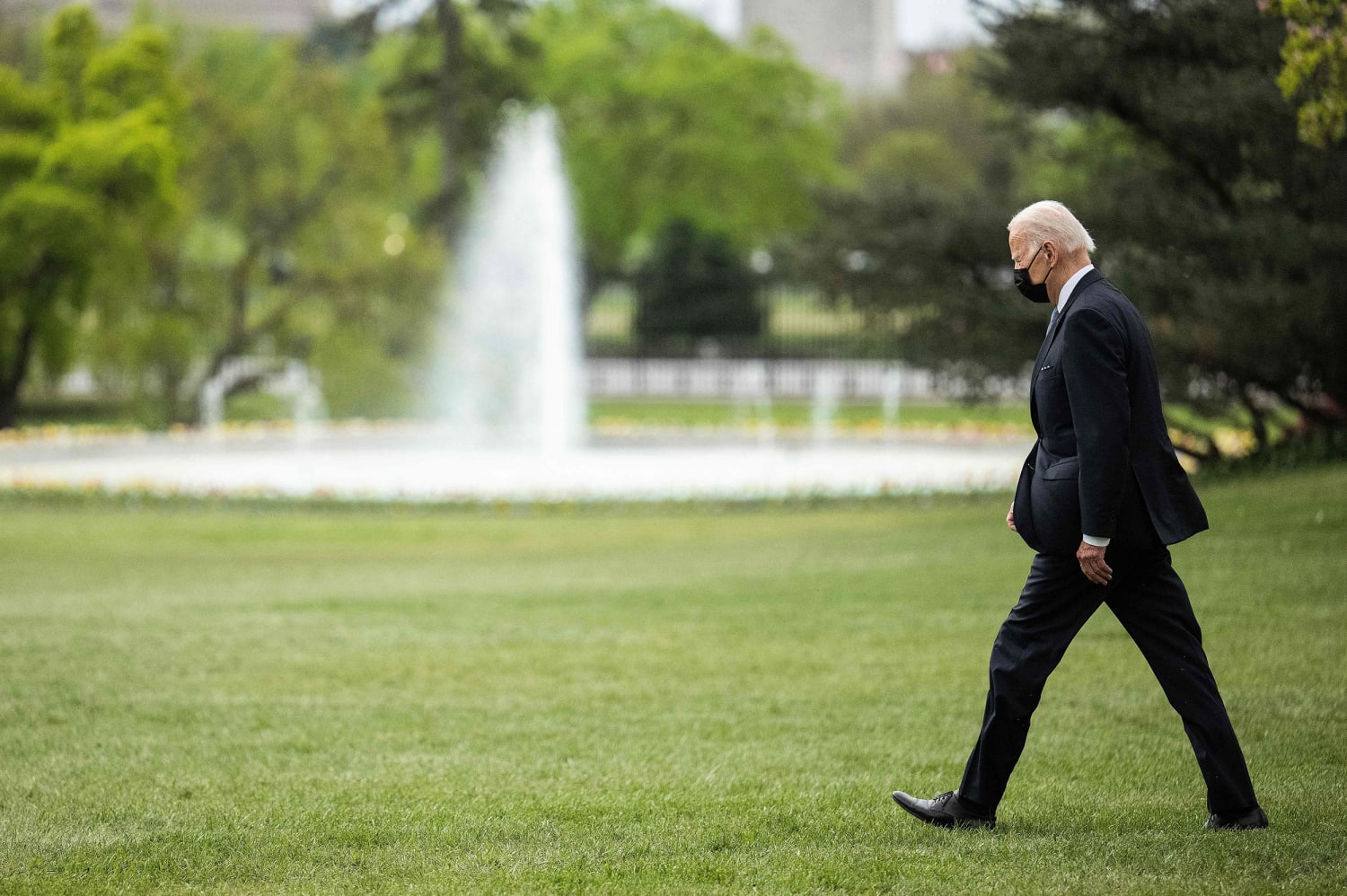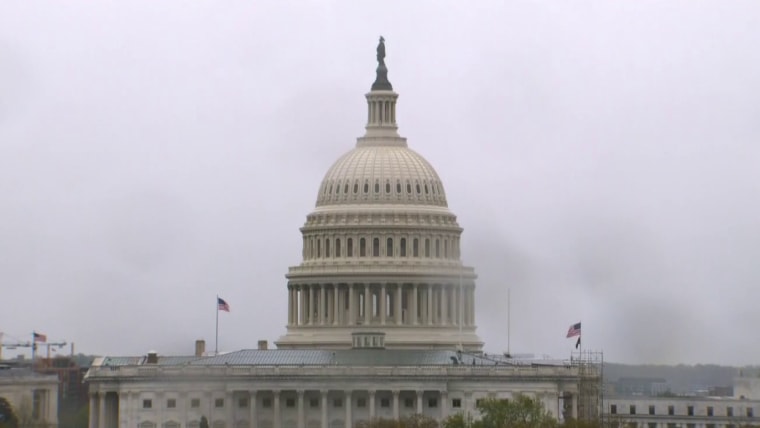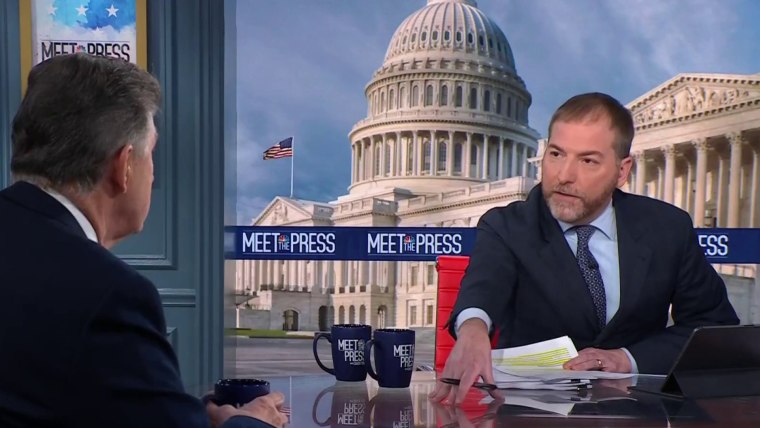WASHINGTON — Democrats are seeking to rekindle major pieces of President Joe Biden’s agenda when Congress returns this week, with high stakes for his legacy, the 2022 midterms and millions of people looking for economic relief.
Before the Senate adjourned, Majority Leader Chuck Schumer, D-N.Y., said discussions of a sequel to the failed Build Back Better Act continue and may “pick up pace” after the two-week recess.
“We want to get it. Look, there are lots of talks going on right now. They’re not in a great degree of granularity,” he told reporters. “We’d like to move a reconciliation bill and go as far as you can, get as much done as we can, with 50 votes.”
Thanks to paper-thin margins, finger-pointing over the failure of the earlier bill and the political vulnerability of some Democrats gearing up for the fall elections, the new effort faces a slew of obstacles. The Senate is likely to act first after the centrist Joe Manchin, D-W.Va., stunned the White House by killing the House-passed bill in December.
Here’s a look at the biggest questions facing the new push:
What are they negotiating over?
Manchin has called for a bill with three components: tax reform, prescription drug costs and energy. Higher taxes on corporations and upper earners would produce more revenue, new rules cracking down on prescription drug prices would save the government money, and dollars from both would be split between reducing the deficit and paying for an “all of the above” energy plan that supports climate-focused technology and fossil fuels.
All come with question marks, and the further Manchin strays from the House bill that passed last year, the more complicated they might get.
Taxes are more complicated, and they could run into thorny issues with Sen. Kyrsten Sinema, D-Ariz. There are many possible versions of prescription drug reform, too; the one in the House bill was carefully crafted to placate her and other holdouts, some from states and districts with heavy ties to the pharmaceutical industry.
On energy, Manchin has said he is starting from scratch, but Democrats still assume the rough jumping-off point will be the $555 billion climate plan from the Build Back Better initiative, which included tax credits to encourage faster adoption of renewable energy, zero-emission vehicles and other green tech.
If Democrats reach a deal on the above items — a big “if” — the next question is whether Manchin is willing to entertain any additional social spending. Raising revenue similar to the revenue in the House’s Build Back Better Act could leave enough to fund one or more programs and still devote an equal amount to deficit reduction.
How much does Manchin want a deal?
To allies of Schumer, it all comes down to whether Manchin wants to get to “yes” after he pulled out of negotiations entirely in December and withdrew any previous offers he might have made.
“In the end, it wasn’t any specific provision or group of provisions that sank the bill. It was that not all 50 Democratic senators were interested in getting to yes,” said Matt House, a former communications director for Schumer. “For it to be successful this time, that’ll have to change.”
Even Democrats eager to deal with Manchin on his own terms have publicly wished he would simply write his preferred bill rather than vaguely refer to a possible framework for a deal.
Manchin’s defenders argue that he has been consistent from the start and that his concerns about ensuring long-term financing for new programs weren’t taken seriously enough by the leadership.
This time around, Manchin is widely seen as dictating the terms of any bill from the start, and everyone from the White House to leading progressives appear eager to say yes to whatever he’ll give them. Manchin’s decision to walk away from the table in December made it clear he’s fine with no bill. Liberals want it more than he does.
Will Sinema create problems?
Perhaps the biggest concern among Democrats eager for a bill is that Manchin and Sinema don’t have compatible demands — mainly on revenue.
For Manchin, the priority is to reform the tax code to raise money and cut the deficit. In particular, he wants to raise the corporate tax rate from 21 percent to 25 percent, raise the top capital gains tax rate from 23.8 percent to 28 percent, and close a so-called carried interest loophole that favors hedge funds and other investors.
They are all typical Democratic positions. But Sinema isn’t a typical Democrat: She opposed rate increases during negotiations, a position a Sinema aide said she stands by now. Because of her demands, the House passed a bill that still managed to raise about $2 trillion, but through other means, like a new minimum tax on corporations and a surtax on incomes more than $10 million.
“They’re going to have to figure out if all those revenues can stay, if some can stay, or if they have to go back to the drawing board,” said Ben Ritz, the director of the Center for Funding America’s Future at the Progressive Policy Institute.
If Manchin and Sinema can’t agree on $2 trillion in taxes and savings, there might be enough overlapping ideas for a $1 trillion bill that could finance a climate plan and deficit reduction. But if Sinema sticks to her red lines and Manchin decides his specific tax ideas are a must-have, the effort could collapse very quickly.
Let’s say Sinema and Manchin work it out. Will enough Democrats get on board?
A senior House Democratic aide said Schumer needs to recognize he can’t please everybody, advising him to figure out what can win all 50 votes in the caucus and own it. The aide pointed to a remark by former Senate Democratic Leader Harry Reid to Time magazine in an article in January when he was asked about Schumer: “If you’re going to be a good leader, you have to be able to say no.”
Democrats from the moderate side of the party agree that Schumer’s role will be key.
“Because of the divergent views in our caucus, this needs to be a process driven by the White House and Senate majority leader to figure out where the perfect Venn diagram overlap is and maximize what our party can get done,” said John LaBombard, a former spokesman for Sinema. “I believe that if there is a will, there is a way to achieve a package that can earn support from Bernie Sanders and Joe Manchin and everyone in between that would effectively address inflation, rising costs and the cost of living.”
On the party’s left flank, progressives have mostly signaled they’re open to a smaller deal, even if it means some painful sacrifices, such as abandoning cherished proposals or even providing a short-term boost to fossil fuels. But the true test would come only if a deal were announced, and a last-minute revolt from just one senator or five House members would kill a bill.
Rep. Alexandria Ocasio-Cortez, D-N.Y., said it “makes sense” to consider a bill with taxes, drug savings and climate funding.
“I think the really big, key thing we need to consider is what actual financial boosts we’re going to be able to provide to working people. Because people are really feeling the loss of the child tax credit,” she said.
Other holdouts have been House moderates demanding a full restoration of the state and local tax deduction, which largely benefits well-off taxpayers and may have to go. But they’d be under enormous party pressure to back a deal with 50 Senate votes.
Will the election-year calendar muck it up?
Time is short. There are only 12 legislative weeks on the Senate calendar before the monthlong August recess, which is widely seen as the point of no return given the proximity to the election. And Biden’s immediate priorities in Congress are a new aid package for Ukraine and Covid-19 funding, a White House official said.
To wrap up the larger bill by August, however, a loose framework agreement may be needed much sooner — perhaps as early as the end of May — to give lawmakers time to fill in the details, schedule floor time and vote on amendments.
Politically vulnerable Democrats are gearing up for re-election by field-testing their messages. Passing a major piece of legislation late in the cycle could make certain lawmakers feel risk-averse.
But others in the party insist that a reconciliation bill would be a net benefit, and many front-line members have expressed strong interest in passing popular initiatives like prescription drug reform to shore up their midterm message. There was little sign of celebration from members in competitive seats when Manchin walked away last year.
Sean McElwee, the executive director of the liberal firm Data for Progress, said the political consequences of falling short yet again would be dire. “Failing to pass this bill would further erode our already weak base enthusiasm and set Democrats up for a disaster,” he said.
Source: | This article originally belongs to Nbcnews.com












